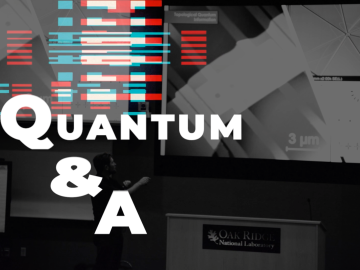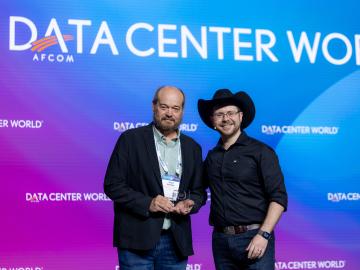
Filter News
Area of Research
- (-) Biology and Environment (56)
- (-) Supercomputing (73)
- Advanced Manufacturing (1)
- Biological Systems (1)
- Building Technologies (1)
- Clean Energy (63)
- Computational Engineering (1)
- Computer Science (2)
- Electricity and Smart Grid (1)
- Energy Sciences (1)
- Fuel Cycle Science and Technology (1)
- Fusion and Fission (19)
- Fusion Energy (3)
- Isotope Development and Production (1)
- Isotopes (15)
- Materials (76)
- Materials Characterization (2)
- Materials Under Extremes (1)
- National Security (26)
- Neutron Science (32)
- Nuclear Science and Technology (2)
News Topics
- 3-D Printing/Advanced Manufacturing (3)
- Artificial Intelligence (15)
- Big Data (6)
- Bioenergy (17)
- Biology (24)
- Biomedical (4)
- Biotechnology (6)
- Buildings (1)
- Chemical Sciences (3)
- Clean Water (3)
- Climate Change (21)
- Composites (1)
- Computer Science (15)
- Coronavirus (4)
- Critical Materials (1)
- Cybersecurity (1)
- Decarbonization (11)
- Energy Storage (2)
- Environment (34)
- Exascale Computing (12)
- Frontier (15)
- Grid (1)
- High-Performance Computing (25)
- Hydropower (3)
- Isotopes (1)
- Machine Learning (6)
- Materials (8)
- Materials Science (2)
- Mathematics (2)
- Mercury (2)
- Microscopy (4)
- Nanotechnology (3)
- National Security (4)
- Net Zero (2)
- Neutron Science (1)
- Nuclear Energy (1)
- Partnerships (2)
- Physics (2)
- Quantum Computing (7)
- Quantum Science (4)
- Renewable Energy (1)
- Security (1)
- Simulation (18)
- Software (1)
- Summit (7)
- Sustainable Energy (10)
- Transportation (2)
Media Contacts

In mid-April, students from Webb School of Knoxville taking an advanced science class that focuses on quantum computing topics visited the Department of Energy’s Oak Ridge National Laboratory to tour its world-class facilities and discover the many career paths available in the ever-growing field of quantum information science.

Colleen Iversen, ecosystem ecologist, group leader and distinguished staff scientist, has been named director of the Next-Generation Ecosystem Experiments Arctic, or NGEE Arctic, a multi-institutional project studying permafrost thaw and other climate-related processes in Alaska.

Researchers used Oak Ridge National Laboratory’s Quantum Computing User Program to perform the first independent comparison test of leading quantum computers.

Paul Abston, leader of the HPC Infrastructure Operations Group of the National Center for Computational Sciences and manager of the Oak Ridge Leadership Computing Facility’s data center, has been named Data Center Manager of the Year for 2023.
Oak Ridge National Laboratory scientists led the development of a supply chain model revealing the optimal places to site farms, biorefineries, pipelines and other infrastructure for sustainable aviation fuel production.

Computing pioneer Jack Dongarra has been elected to the National Academy of Sciences in recognition of his distinguished and continuing achievements in original research.

A trio of new and improved cosmological simulation codes was unveiled in a series of presentations at the annual April Meeting of the American Physical Society in Minneapolis.

Climate change often comes down to how it affects water, whether it’s for drinking, electricity generation, or how flooding affects people and infrastructure. To better understand these impacts, ORNL water resources engineer Sudershan Gangrade is integrating knowledge ranging from large-scale climate projections to local meteorology and hydrology and using high-performance computing to create a holistic view of the future.

A study led by Oak Ridge National Laboratory researchers identifies a new potential application in quantum computing that could be part of the next computational revolution.

Oak Ridge National Laboratory scientists exploring bioenergy plant genetics have made a surprising discovery: a protein domain that could lead to new COVID-19 treatments.


